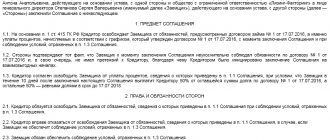Kontur.Accounting is a web service for small businesses!
Quick establishment of primary accounts, automatic tax calculation, online reporting, electronic document management, free updates and technical support.
Try it
For each organization, it is important to maintain two legally established types of accounting. Each of them has its own goals and objectives. What is the difference between accounting and tax accounting?
First, the purposes of record keeping differ. Accounting provides information about the results of activities to the management of the organization and stakeholders. Tax accounting allows fiscal authorities to control the completeness of tax payment, the reliability of reporting and the implementation of legislation on taxes and fees.
Secondly, appropriate legislation has been developed for taxation purposes, in particular the Tax Code. Accounting statements are maintained in accordance with federal law, PBU and other documents. It is legislative regulation that is the main reason for the differences.
Permanent differences in accounting and tax accounting
Permanent differences arise from the portion of profits that is allocated only to accounting or only to taxable profits. That is, if your organization's actual and taxable income or expenses differ, then permanent differences arise. This is how permanent tax liabilities (PNO) or assets (PNA) appear. Due to the PNA, the income tax that you reflect in the reporting period will increase, and the PNA will reduce payments. Do not reflect PNO and PNA in the balance sheet, since they are recognized in the period when permanent differences arose.
However, PNO and PNA need to be shown in the financial results report, namely in line 2421. To account for them, accounts 68 and 99 are used.
PNA accrued: Dt 99 Kt 68 PNA accrued: Dt 68 Kt 99
Types of discrepancies
Important! Tax accounting is carried out by organizations that pay income tax. At the same time, profit, which is calculated in accordance with the Tax Code of the Russian Federation, differs from accounting profit
In order to reflect in accounting the differences between the income tax and the tax indicated in the declaration, PBU 18/02 “Accounting for calculations of corporate income tax” is used. At the same time, the differences between accounting and tax accounting can be permanent or temporary.
Fixed income or expenses include:
- accepted in accounting, but not forming taxable profit both in the current and in subsequent periods;
- recognized in tax accounting, but not accepted in accounting either in the current or in subsequent periods.
Permanent differences result in permanent tax liabilities (PNO) or assets (PNA). The occurrence of PNO means that the company has an obligation to pay tax, that is, income tax payments will be increased in the reporting period. In contrast, a PVA means that the company will not have to pay part of any tax payment.
Temporary differences are understood as income or expenses that are accepted for accounting in one reporting period, and for tax accounting in another. It is temporary differences that can give rise to deferred taxes, which is the amount of income tax that increases or decreases the payment to the budget in the subsequent reporting period. There are two types of temporary differences: deductible and taxable. The former reduce income tax in subsequent periods, and the latter increase it.
If the company's income and expenses reflected in the accounting records correspond to the company's income and expenses accepted for taxation, then the tax calculated on the accounting profit will be equal to the income tax indicated in the tax return. If there are discrepancies, then the two types of this tax will be related by the following formula:
NP = UR(D) + SHE – IT + PNO – PNA, where
NP – income tax;
UR(D) – conditional income tax expense (income);
SHE – the difference between SHE accrued in the reporting period and SHE repaid in the same period;
IT is the difference between IT accrued in the reporting period and IT repaid in the same period.
Temporary differences in accounting and tax accounting
If you attribute income and expenses that form actual profit and form the income tax base to different reporting periods, temporary differences appear. They have different effects on taxable income, so they are divided into two groups.
- If income is recognized earlier in tax accounting and later in accounting, deductible temporary differences appear. This leads to the emergence of a deferred tax asset (DTA).
- In the opposite situation, taxable temporary differences arise and a deferred tax liability (DTL) arises.
The formation of ONA or ONO leads to the fact that in subsequent reporting periods the amount of income tax will decrease or increase. In the balance sheet, SHE is taken into account in line 1180, ONO - in line 1420. SHE and IT are reflected in account 68, but there are also special accounts for them - 09 and 77, respectively.
Accrued IT: Dt 09 Kt 68 Accrued IT: Dt 68 Kt 77
In the financial results report, IT is reflected in line 2430, and IT is reflected in line 2450. Due to the complexity of the formation and reflection of permanent and temporary differences, regulatory authorities are trying to create a unified approach to generating profit. But for now, an accountant has to take into account all the intricacies of accounting and tax accounting systems.
Table
| Tax profit | Accounting profit |
| What do they have in common? | |
| May be the same size | |
| Does not involve taking into account opportunity costs - unlike economic profit | |
| Can be calculated based on the same documents | |
| What is the difference between them? | |
| Calculated for the purpose of determining the tax base of the enterprise according to the criteria of the Tax Code of the Russian Federation | Calculated in order to comply with accounting legislation or at the request of the investor |
| Determined only in those taxation systems in which tax is calculated taking into account income and expenses | Calculated under any tax system |
On the reasons for discrepancies between accounting and tax reporting under the simplified tax system
For taxpayers of the single tax under the simplified taxation system, which is paid by most organizations belonging to the “micro-enterprise” category, the tax authorities will first of all compare the values of the reporting indicators of the tax return according to the simplified tax system and financial (accounting) statements.
If we have any discrepancies between the data in the tax return and the financial statements that are incomprehensible to the tax inspectors, then they will definitely require clarification.
What will tax inspectors immediately pay attention to?
If the income in the tax return is less than the income in the financial statements.
This always raises questions, since the control ratios of the values of income indicators in the tax return and revenue in the accounting report on the results of financial activities must be identical. But there are non-standard situations when, for objective reasons, this may not be the case.
- Valid reasons for such discrepancies include:
- If at the end of the reporting year we have outstanding debts from debtors (buyers and customers). Since the procedure for recognizing income in tax accounting for the purposes of the simplified tax system and accounting differs. then in tax accounting income is recognized on a cash basis, and in accounting - on an accrual basis. The presence of accounts receivable at the end of the year will mean that we have not yet received money for the goods, works and services sold and, accordingly, this amount has not been included in tax revenues. At the same time, in our accounting, the sales value of goods, products, works or services is already reflected in the credit of account 90 “Sales” of the “Revenue” subaccount.
- If we received inventory items free of charge in the reporting year from the founder with a share in the authorized capital of more than 50%. This discrepancy is also caused by different rules for accounting for property received free of charge. In tax accounting, the value of such property is not reflected in taxable income according to paragraph 1.1 of Article 346.15 and subparagraph 11 of paragraph 1 of Article 251 of the Tax Code of the Russian Federation (unless, of course, we sold it within a year after receipt. Then the market value of the object is included in income). And in accounting, in any case, the received property must first be reflected as gratuitous receipts and only then, after the received values have been spent or sold as goods, and if this is a fixed asset, then when it begins to depreciate, the corresponding part of the market value must be included in income. And reflect account 91 on the loan as other income. If funds are received free of charge from the founder, then accordingly they are immediately reflected in accounting as other income. But they don’t appear in tax accounting at all.
If the income in the single tax return is higher than in the financial statements
This is also possible in the practice of economic activity of business entities, when our obligations to counterparties at the end of the reporting period are not fully fulfilled based on the advances received.
In tax accounting, we include in the income tax base all receipts from buyers and customers for goods, works, and services sold, including prepayments. Whereas in accounting, revenue will be recognized based not on the receipt of funds, but on the basis of documented invoices, acts and documents regarding the delivery of goods, provision of services, and performance of work.
There are more expenses in the tax return than in the financial statements
It’s always better, of course, if it’s the other way around, when there are more expenses in the accounting report and fewer in the tax return. This would be ideal, but often it turns out completely differently. And this is always a reason for a tax request.
Such discrepancies may be associated with the repayment of old debts accumulated by the taxpayer.
In tax accounting and accounting, the same expenses can be taken into account at different times. When calculating simplified tax, we can recognize expenses only after payment, see paragraph 2 of Article 346.17 of the Tax Code of the Russian Federation. And in accounting - in the period to which they relate.
So if in 2021 we paid for goods, work or services that we purchased and sold back in 2016, then our tax expenses may be greater than accounting expenses. We reflected them in tax accounting in 2021, since that was when the payment was made. And we have already reflected such expenses in accounting in 2016. Because of this, the expense indicator in the declaration under the simplified tax system may be higher than the sum of the indicators in the lines “Cost of sales”, “Commercial expenses” and “Administrative expenses” of the financial statement.
And one more thing just in case. If you and I are individual entrepreneurs, then we cannot have discrepancies between accounting and tax reporting. Since accounting records are not submitted to individual entrepreneurs.
Accounting for deferred taxes, PNO and PNA
| Description | Dt | CT |
| Contingent income tax expense accrued | 99 “Profits and losses”, subaccount “Conditional expense” | 68 “Calculations for taxes and fees” |
| Conditional income tax accrued | 68 “Calculations for taxes and fees” | 99 “Profits and losses”, subaccount “Conditional income” |
| SHE is reflected | 09 “Deferred tax assets” | 68 “Calculations for taxes and fees” |
| SHE reduced | 68 “Calculations for taxes and fees” | 09 “Deferred tax assets” |
| ONA is written off upon disposal of the corresponding asset | 99 "Profits and losses" | 09 “Deferred tax assets” |
| IT is reflected | 68 “Calculations for taxes and fees” | 77 “Deferred tax liabilities” |
| IT has been reduced | 77 “Deferred tax liabilities” | 68 “Calculations for taxes and fees” |
| IT is written off upon disposal of the corresponding asset (liability) | 77 “Deferred tax liabilities” | 99 "Profits and losses" |
| PNA reflected | 68 “Calculations for taxes and fees” | 99 "Profits and losses" |
| Reflected PNO | 99 "Profits and losses" | 68 “Calculations for taxes and fees” |
Deferred tax accounting
D99 subaccount “Conditional expense” D68 – accrued conditional income tax expense;
D68 K99 subaccount “Conditional expense” – conditional income for income tax is accrued;
D09 K68 – deferred tax assets are reflected;
D68 K09 – deferred tax assets were reduced;
D99 K09 – deferred tax assets are written off upon disposal of the asset;
D68 K77 – deferred tax liabilities are reflected;
D77 K68 – deferred tax liabilities were reduced;
D77 K99 – deferred tax liabilities are written off upon disposal of an asset (liability);
D68 K99 – permanent tax assets are reflected;
D99 K68 – permanent tax liabilities are reflected.





